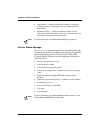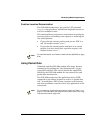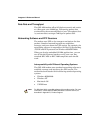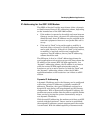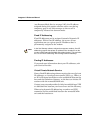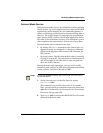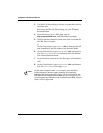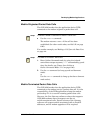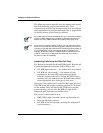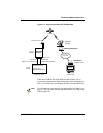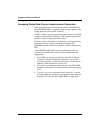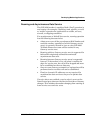
Integrator’s Reference Manual
5-28 80-99208-1 Rev. D
The following sections describe how the modem itself would
deal with incoming (mobile-terminated) calls. This
information is provided for developers who wish to configure
their applications for mobile-terminated calls, in preparation
for future releases of the Gateway software.
Tip
As an alternative to mobile-terminated calls, you can have the modem
receive an SMS message, then originate a call back to the host. For
details, see Using SMS for Mobile-Terminated Calls on page 5-18.
Tip
If your Service Provider supports Caller ID, you can have the modem
receive a non-packet-data call, then originate a call back to the host. An
incoming non-packet-data call to the DCE would toggle RI and wake up
the DTE application, which could decide whether to call back. For
example, for security reasons a callback might be allowed only if the
Caller ID number is on an approved list. Check with your Service
Provider for Caller ID availability.
Answering Calls Using the Data Port Only
The Data port uses both the RI and DTR signals. How the call
is answered depends on whether DTR is high or low:
• DP_DTR high (asserted) — the modem will auto-answer.
• DP_DTR low (de-asserted) — the modem will not
auto-answer, but your DTE application can decide
whether to answer the call by raising DP_DTR. On an
incoming call, the modem asserts RI and displays RING
to the appropriate port (Data port in this case).
Normally, if the application is using the Data port only and
DP_DTR is low, the modem would be powered off. To power
on the modem while still leaving DP_DTR low to prevent
auto-answering, you can wire the DTR pin high on the
Diagnostic port, instead of on the Data port.
The scenario could work like this:
• DMP_DTR is high (asserted), powering the modem on.
• RI on the Data port asserts.
• DP_DTR is low (de-asserted), meaning the modem will
not auto-answer.



